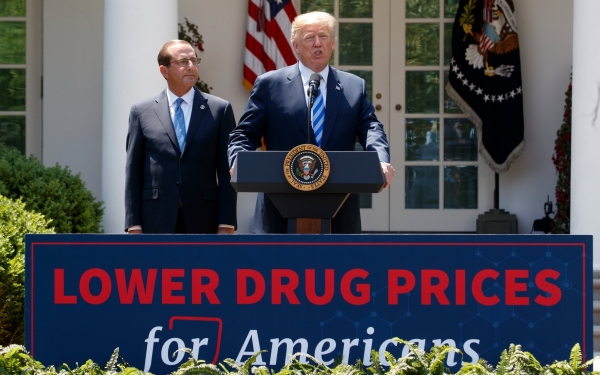
U.S. President Donald Trump is continuing in his efforts to lower drug prices, especially targeted at prescription drugs. Having already faced two major setbacks: a killed proposal that would have reduced out-of-pocket costs for older consumers and a blocked rule requiring drug prices in TV ads by the federal judge, Trump has now signed an executive order aimed at improving Medicare–a definite step towards lowering health-care costs. Further actions directly targeting drug prices are still to come.
The Rise of Drug Prices
According to National Health Expenditure data, the U.S. spent about 333 billion USD in 2017, a 40% increase from 236 billion USD in 2007. Drug prices for many prescription drugs increased significantly in the last year and resulted in many patients forgoing medication, putting millions of lives at risk. For example, insulin, has nearly quadrupled in price, leaving many patients with difficult choices.
The main reason for this increase in drug prices is generally attributed to a lack of competition and price transparency. Pharmaceutical Benefit Manager is also known to drive drug prices up. Negotiations are not transparent, and the costs are ultimately transferred to the government, insurance payors, taxpayers, and patients.
International Price Gaps
Compared to other industrialized nations where the government directly or indirectly controls drug prices, the amount of price that the U.S. pays for drugs is huge; U.S. prices for the world’s 20 top-selling drugs are, on average, three times higher than prices in Britain. Essentially, the U.S. is paying the “full price” of drugs while other countries are getting a “discount.”
Many former presidents, both Democratic and Republican, have tried tackling this problem; none of them had any real success. Normalizing drug prices is done by either lowering prices in the U.S. or bringing the prices up in other countries. The latter, however, is highly improbable by obvious reasons; the countries are not willing to pay higher prices for drugs and will threaten to copy patents and create their own cheaper versions. The former, although more practical, is still hard to achieve because drug prices are directly controlled by companies who are reluctant to change.
Trump’s Move
The Trump administration’s primary focus is to achieve health-care cost transparency and is actively disclosing proposals and negotiating with industry representatives. The effort to provide transparency is seen as largely symbolic, holding companies accountable for high drug prices, even if it did not directly contribute to lowering costs. Although rejected by the federal judge, proposals such as mandatory inclusion of drug prices in TV ads reflect the active nature of the administration.
President Trump has signed an executive order on Oct. 3 explaining that it would improve private Medicare plans for seniors while claiming without evidence that pharmaceutical companies could be pushing for his impeachment and helping to drive “the hoax.” House Democratic Caucus speaker Nancy Pelosi has also unveiled a sweeping plan to lower the price of prescription drugs; Trump however, blamed Pelosi of showing interest in lowering prescription drug prices as a means of distraction, and her actions were just a “camouflage for trying to win an election through impeachment.”


